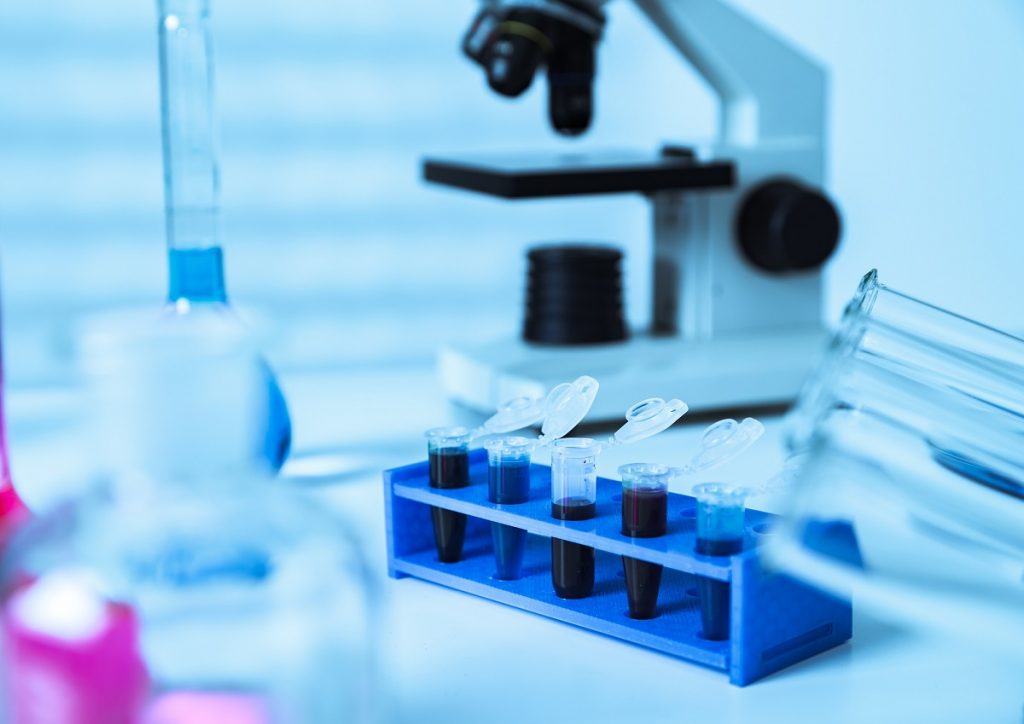An Israeli researcher from Ben-Gurion University of the Negev (BGU) says he developed and is now confirming the validity of a COVID-19 test that identifies carriers through collected samples from a breath test or throat and nose swabs in under one minute.
According to a university statement this week, the test has shown accuracy of over 90 percent compared to the PCR (polymerase chain reaction) tests currently being used to identify COVID-19 carriers.
The test is also said to be available at a significantly lower cost than current testing, according to Prof. Gabby Sarusi, deputy head for research at the School of Electrical and Computer Engineering and a faculty member of the Electro-Optical Engineering Unit at BGU, who developed the test.
Clinical trials of the new method were conducted on 120 subjects by BGU and Israel’s Ministry of Defense, the university said. The ongoing trials aim to discover whether the test can identify the specific stage of COVID-19 infection and its presence.
“Right from the beginning of the trials, we received statistically significant results in line with our simulations and PCR tests,” said Prof. Sarusi.
“We are continuing clinical trials and will compare samples from COVID-19 patients with samples from patients with other diseases to see if we can identify the different stages of the COVID-19 infection,” he added.
The test involves particles from a breath test or a throat and nose swab which are placed on a chip with a dense array of metamaterial sensors designed for this purpose. The system analyzes the biological sample and provides an accurate positive or negative result within a minute through a cloud-connected system.
Sign up for our free weekly newsletter
SubscribeThe method is based on an electromagnetic wave known as terahertz (THz) radiation and detects changes in the sample that are caused by the presence of the virus. It focuses on a change in the resonance in the THz spectral range, imposed by the coronavirus through a THz spectroscopy performed on the device, the university said, adding that this spectral range has been employed in recent decades for the fast detection and identification of biological samples.
The point-of-care device automatically backs up the results into a database that can be shared by authorities, making it easier than ever to track the course of the virus, as well as triage and treat patients, according to the researcher.
“We asked ourselves since this virus is just like a nano-particle or a quantum dot with a diameter between 100nm to 140nm in terms of its size and electrical properties, can we detect it using methods from the worlds of physics, photonics and electrical engineering,” said Prof. Sarusi. “We discovered that the answer is yes, this virus resonates in the THz frequency, and spectroscopy in these frequencies reveals it promptly.”
Each test kit will cost between $50 to $100 to produce, the university says, which is “far less than current laboratory testing.” Also, because the test is electro-optical in nature, rather than biochemical, it is not sensitive to environmental factors that can affect the results of current testing methods.
Last month, researchers from the Hebrew University of Jerusalem claimed they had developed a testing method for COVID-19 that they said is up to 10 times faster and more cost-effective than the methods used previously to identify the novel coronavirus. The test relies on the existing process to extract genetic material (RNA and DNA) using magnetic beads, but uses a special buffer solution to accelerate and ameliorate binding.
The BGU testing method seeks to avoid the current common method of amplifying and identifying viral RNA sequences because they depend on costly reagents and biochemical reactions, often require logistically complicated shipping and handling of sensitive materials, and can often take hours or days to yield results.
Related posts

Israeli AI Safety Tool Among TIME’S Best Inventions For 2024

TAU Team Discovers Mechanism To Eliminate Cancerous Tumors

Ashdod Port Investing In Startups As Part Of Innovation Strategy




Facebook comments